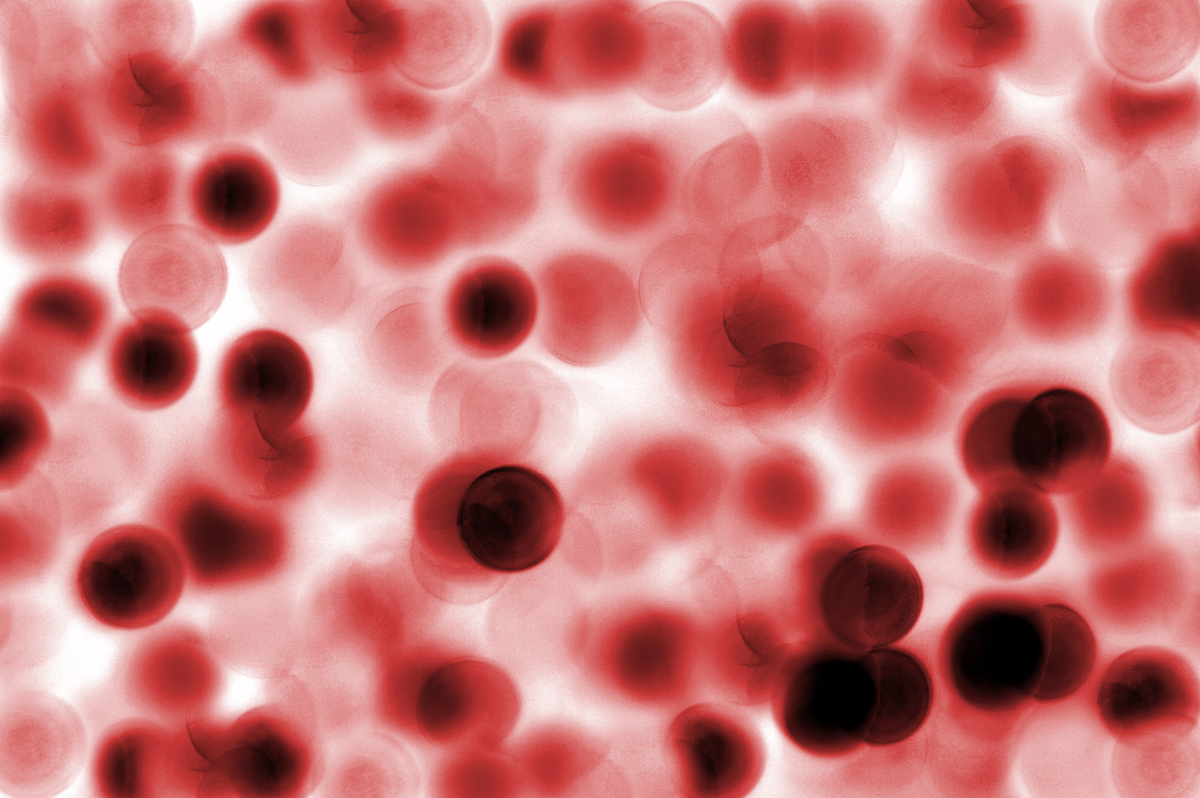
New: Early Mornings! Join us on Thursdays and Fridays in April, starting at 9 a.m.

By Alyson Smith
We can learn a lot about animals by looking at their cells, and red blood cells are no exception. These specialized cells—found in vertebrates and six other groups of animals—travel in blood vessels to transport oxygen and carbon dioxide between the lungs (or gills) and the rest of the body. Red blood cells get their color from heme, an iron-containing molecule that transports oxygen.
Red blood cells were first studied in the 1600s, soon after the development of modern light microscopes by Dutch scientists. As microscope technology improved, scientists began to measure the shapes and sizes of red blood cells and to notice differences between cells from different animals.
In 1875, George Gulliver summarized this research by drawing red blood cells from over 80 species of vertebrates to relative scale (see picture). This drawing highlights the similarities and differences in red blood cell structure, size and shape across species.
Like most animal cells, red blood cells from fish, amphibians, reptiles and birds all contain DNA in nuclei, represented by shaded ovals in Gulliver’s drawing. By contrast, the red blood cells of mammals lack nuclei and other internal structures found in most animal cells. This simplification allows mammal red blood cells to carry more gas-transporting proteins and to squeeze through smaller blood vessels.
The red blood cells that Gulliver drew range in diameter from the tiny cells of the mouse deer (2 micrometers) to the giant cells of Amphiuma salamanders (66 micrometers). In red blood cells that have nuclei, the amount of DNA sets a lower limit on cell size. Amphibians such as Amphiuma salamanders have up to 25 times more DNA than humans, leading to giant red blood cells. Animals with higher energy needs like mammals and birds have smaller red blood cells, which can exchange gas and travel through blood vessels more efficiently.
The presence of a nucleus makes most fish, amphibian, reptile and bird red blood cells oval-shaped. Without nuclei, mammal red blood cells adopt unique shapes. In many species—including humans—red blood cells have an inner tube-like shape that increases gas exchange efficiency. Mouse deer cells are spherical to minimize diameter while camels and their relatives have oval cells that may help them survive drought conditions.
Today, scientists continue to ask questions about red blood cells from humans and other animals. How does red blood cell shape and size relate to animal anatomy and energy needs? How do red blood cells change as we grow older or when we get sick? What proteins control red blood cell shape and size? Answering these questions can help us understand how humans evolved and how to treat human diseases.
Glossary
This is a list of classification terms used by Gulliver. Since 1875, new findings on the relationships between animals have led scientists to alter some of these classifications.
Vertebrata ahyrnæmata: mammals (red blood cells lack nuclei)
Vertebrata pyrenæmata: non-mammal vertebrates (red blood cells have nuclei)
Quadrumana: non-human primates
Cheiroptera: bats
Feræ: cats, hyenas, dogs, bears, seals
Cetacea: whales, dolphins, porpoises
Pachydermata: elephants, horses, rhinoceroses, pigs, hippopotamuses
Ruminantia: ruminants (cattle, goats, sheep, dear, antelope, etc.)
Rodentia: rodents (mice, rats, squirrels, chipmunks, prairie dogs, etc.)
Edentata: anteaters, tree sloths, armadillos, aardvarks, pangolins
Marsup: marsupials (kangaroos, koalas, wombats, etc.)
Monotr: monotremes (platypus, echidnas)
Aves: birds
Reptilia: reptiles
Batrachia: frogs and salamanders
Pisces: fish